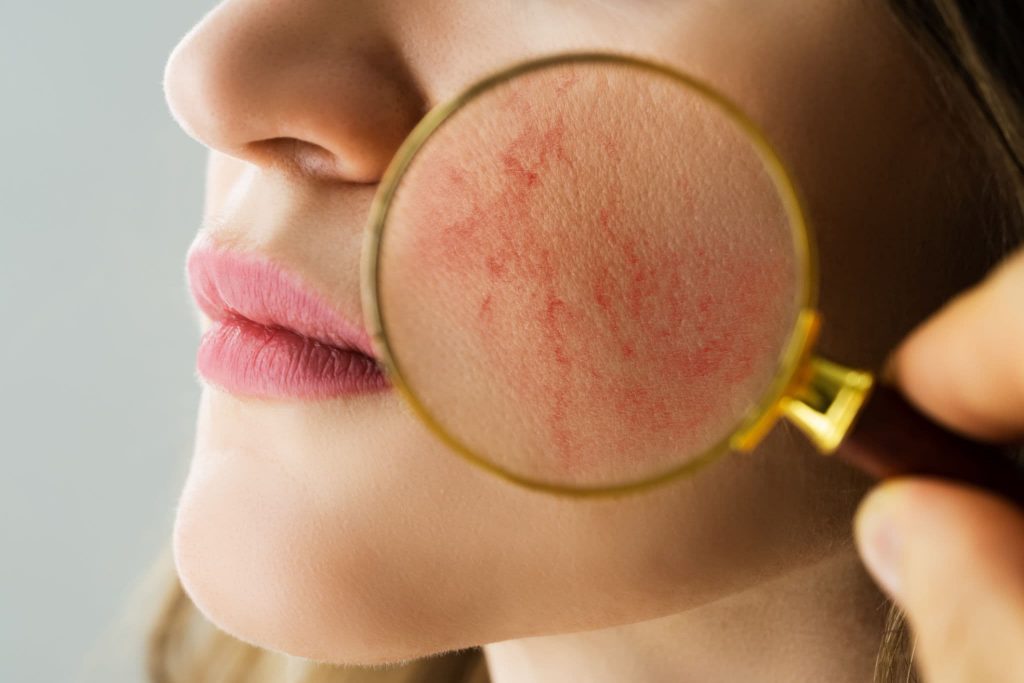Face Treatments
Blood Spots
Sessions
1-6
Result Duration
6 Weeks
Treatment Time
30min - 1h
Back to work
Immediately
Results
6 Weeks
Potential Risk
Temporary mild redness and tenderness
Potential Risk
Temporary mild redness and tenderness
Red or purplish blood spots also known as purpura, appear when blood vessels under the skin burst. Blood spots might be harmless or an indication of a more serious blood clotting condition that needs to be addressed by a healthcare professional.
Aside from skin, the spots can also occur on the inside of the mouth. Blood pools under the skin when small blood vessels burst, resulting in purpura. There are two types of petechial, which are flat and look like tiny red, brown, or purple spots.
A rash is what they appear like when they form in large clumps on your skin. However, unlike many rashes, the patches do not turn white when you press on them.
If the patches are larger and more red or purple in colour, you may be suffering with purpura, a different sort of bleeding disorder.
Want to clear your skin?

Blood Spots can appear any time. This happens when little blood arteries break beneath the skin, which results in pools of blood just below the surface.
Small, reddish-purple dots occur on the skin’s surface and are located just beneath the surface. Under the skin, petechial are microscopic clots caused by bleeding. Injuries, strains, and more serious conditions can all cause them.
If you notice small red dots under your skin that spread quickly, or petechial with other symptoms, you should visit a doctor.
Small red or purple spots on the skin might appear when an irritated blood artery ruptures and spills its contents onto the surrounding tissue. One possibility is that an irritated bigger blood artery will cause an under-the-skin lump that you can feel.
Purpura is diagnosed by a dermatologist. They may inquire about your medical history, including when the spots first appeared. Along with blood and platelet counts, your doctor may take a skin biopsy. These tests can determine if your purpura is caused by a more serious issue such a platelet or blood disorder. Platelet counts can assist your doctor establish the source of your purpura and the best treatment option. If a bruise is spreading rapidly, stop the bleeding.
Wrap the area with an Ace wrap or similar elastic bandage until you see a doctor. You can also apply pressure for 15 minutes at a time. In most cases, senile purpura requires no therapy. But some people despise the bruises and seek treatment. Using topical retinoid that thicken the skin helps slow the ageing process. The likelihood of senile purpura is reduced. However, the risks of retinoid may outweigh the advantages. Wearing shin protectors might also assist avoid mild bruising. The rash itself is untreatable. If it virus, the spots should go away once infection is gone.
If you develop petechiae from a little occurrence like coughing, vomiting, or weightlifting, you can treat it at home by doing the Resting and Adding fluids to avoid dehydration which are effective.
Ready to feel younger?
BLOOD SPOTS Treatments
MICRODERMABRASION TREATMENT
*Disclaimer* The results may vary as everyone it not alike. A number of factors plays a role in the results such as age, lifestyle choices and medical history.

BEFORE

AFTER
MICRODERMABRASION TREATMENT
*Disclaimer* The results may vary as everyone it not alike. A number of factors plays a role in the results such as age, lifestyle choices and medical history.

BEFORE





